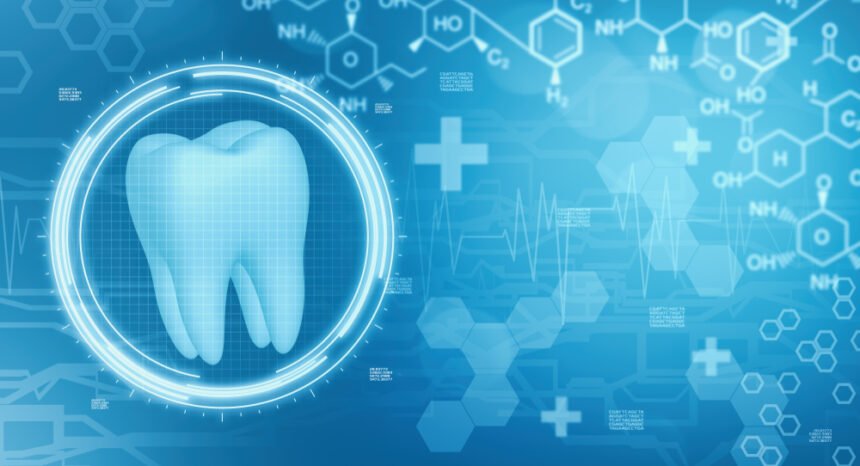Throughout the last several decades, dental technology has undergone a radical transformation, altering the way dental treatments are carried out and enhancing patient results.
After speaking to dentist Dr. Ernie Escobar we learned that dentists today have access to a broad variety of cutting-edge equipment and technology. These new innovations improve diagnostic accuracy, shorten treatment durations, and enhance individualization.
Professionals in the dentistry sector must keep up with the newest developments in this area if they are to give their patients with the finest treatment possible. This article will look at how developments in dental technology are influencing the future of dental treatment.
Digital Imaging and Diagnostics
Images of a patient’s teeth, gums, and other oral structures may be captured and analyzed with the use of digital imaging and diagnostics. Once upon a time, dentists would use tools like X-ray machines and physical exams to determine the cause of patients’ oral health problems. Yet, advancements in digital imaging have allowed dentists to collect higher-quality pictures for more precise diagnosis and treatment planning.
Digital radiography is widely utilized as a kind of digital imaging in the dental field. In this method, X-ray pictures of the mouth and teeth are captured by digital sensors rather than film. Compared to conventional X-rays, digital radiography offers various benefits, such as less radiation exposure, quicker picture processing times, and the ability to enhance and edit images for improved diagnostic accuracy.
When it comes to diagnosing dental problems, digital imaging and diagnostics have vastly increased accuracy and efficiency, leading to better treatment results for patients.
Computer-Aided Design and Manufacturing (CAD/CAM)
By the use of specialized software and high-tech milling equipment, dentists can now construct one-of-a-kind dental restorations including crowns, bridges, and veneers with the use of CAD/CAM technology. Dental restorations are now made in a more timely, accurate, and cost-effective manner because to computer-aided design (CAD) and computer-aided manufacturing (CAM) technologies.
With the use of an intraoral scanner, dentists may capture digital imprints of their patients’ teeth and combine them with CAD/CAM software to create a one-of-a-kind restoration. The milling machine then carves the restoration from a block of ceramic or resin using the design sent from the program. After the necessary adjustments have been made, the restoration may be positioned in the patient’s mouth.
Overall, CAD/CAM technology has revolutionized the production of dental restorations, making them more efficient and patient-friendly in the process. With its guidance, dentists can now craft restorations that are as close to perfect as possible, giving patients the opportunity to experience the benefits of a healthier, more aesthetically pleasing smile.
3D Printing in Dentistry
The dental field is only one of several that has been profoundly affected by 3D printing technology. Dental models, surgical guides, and even dental implants may all be made with extreme precision and individualization with the use of 3D printing in the dental field.
The ability to manufacture exact dental models is a major benefit of 3D printing in dentistry. Dentures, bridges, and even custom-made orthodontic aligners may all be fabricated with the help of these models. The improved speed and precision with which these dental items may be fabricated thanks to 3D printing technology means better results for the patients.
Surgical guidelines for implant placement are another benefit of using 3D printing in dentistry. To ensure that dental implants are put properly, dentists may use 3D printing to make a customized surgical guide that fits snugly over a patient’s teeth. This may reduce the risk of problems and boost the implant’s durability.
Artificial Intelligence in Dentistry
AI has the potential to revolutionize dentistry by helping doctors make more precise diagnoses, leading to better treatment results and reducing inefficiencies in dental offices. Artificial intelligence (AI) is a subfield of computer science that allows autonomous machine learning and decision-making.
Dental X-rays and CT scans are only two examples of the types of dental pictures that are being analyzed with the use of artificial intelligence. Dentists may use AI algorithms to scan these photos to spot the first symptoms of dental problems like cavities, gum disease, and oral cancer, and then devise preventative measures to address these issues before they worsen.
Personalized treatment plans are another area where AI has found use in the dental field. Dentists may better meet their patients’ individual requirements by using AI algorithms to assess data such as a patient’s dental history, current oral health, and other characteristics.
In orthodontics, AI is also being utilized to boost treatment success rates for patients. Artificial intelligence algorithms may analyze data from orthodontic treatment outcomes to create prediction models that can aid dentists in predicting the results of different treatment choices and making more educated decisions about patient care.
Final Words
It is clear that the delivery and reception of dental treatment have been revolutionized by technological developments in recent years. In dentistry, technology has many different uses, including digital imaging and diagnosis, computer-aided design and manufacture, cutting-edge restorative materials, 3D printing, and even artificial intelligence.
The use of these technologies has resulted in better diagnostics, more effective treatments, and more satisfying patient experiences. In addition to these benefits, they have allowed more people, especially those living in rural regions or who have mobility challenges, to get medical attention.










